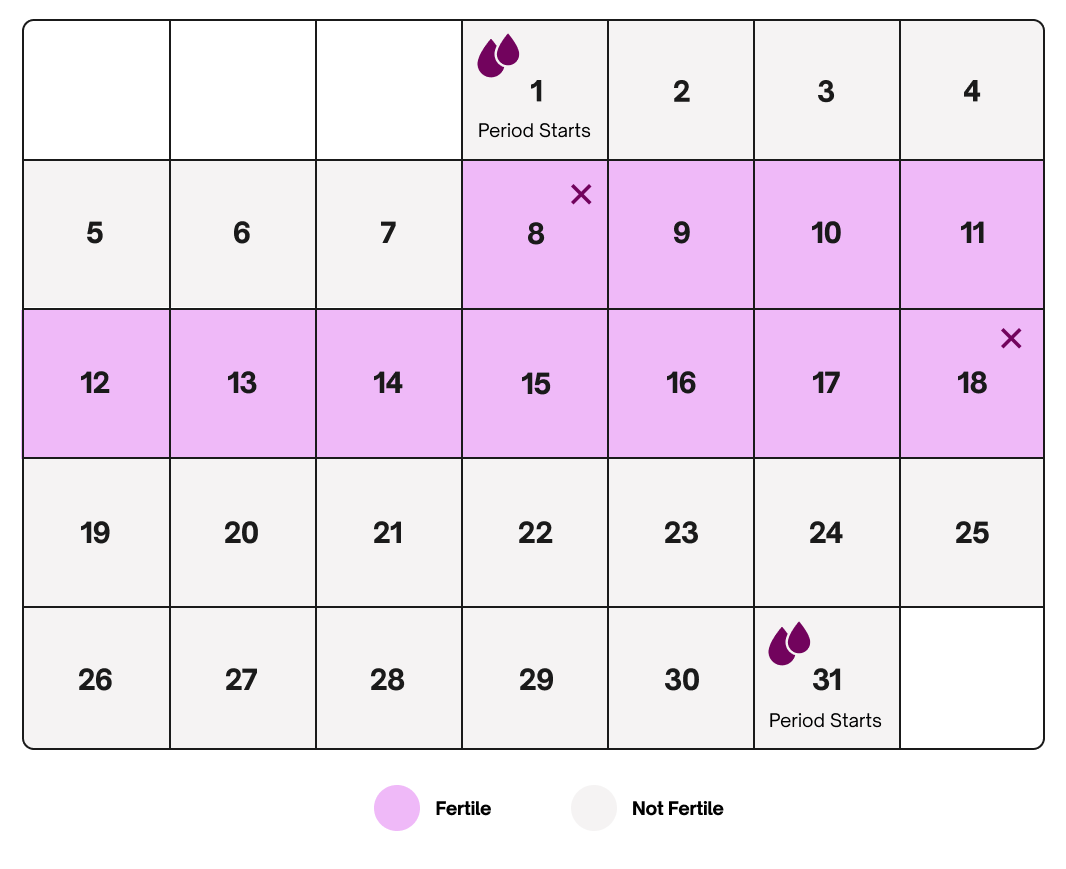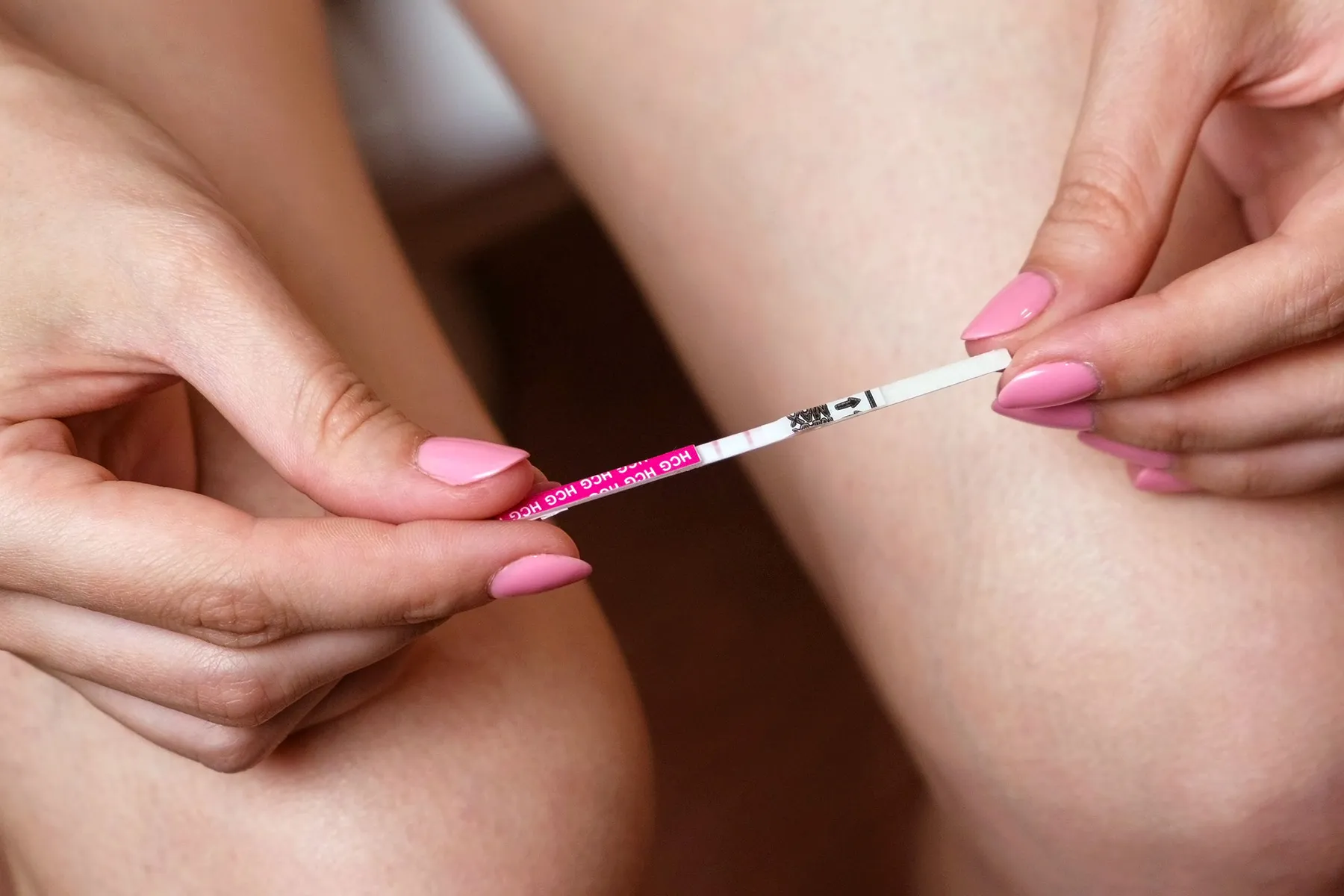How to Calculate Your Ovulation Window and Know When You’re Most Fertile
Your ovulation window is the handful of days when your body becomes capable of pregnancy. Most of the time, that’s the five days before ovulation, the day it happens, and sometimes the one after. If you’re trying to conceive, this is the window that actually counts. If you’re not, this is when things get risky. A lot of people just guess. Some use apps that don’t really understand what their body is doing. In this article, we’re going to go over how the fertile window works and how to track it properly. Without further ado, let’s dive in!
When Does Ovulation Happen and How Long Does the Fertile Window Last?
To calculate your fertile days, start by knowing your cycle. A menstrual cycle begins on the first day of bleeding and ends the day before the next bleed. Ovulation usually occurs in the middle of the cycle. In a textbook 28‑day cycle, ovulation is often around day 14.
Women generally ovulate approximately two weeks before their period, so for regular cycles that works out to about 12–16 days before the next bleed starts. But again, this is not set in stone since many women have shorter or longer cycles, so the exact day varies.
Your egg lives only about a day after release, while any sperm from sex in the days before can survive long enough to fertilize it. So if you have intercourse up to ~5 days before ovulation, plus the day of and even the day after ovulation, those are your fertile days.
In fact, pregnancy is most likely if sex happens on the day before ovulation or on ovulation day, but conception can occur up to 4–5 days prior thanks to sperm longevity.
How to Calculate Ovulation Windows?
So, how do you calculate when that fertile window falls? Here are the key approaches:
1. Try the Calendar Method

The calendar method is one of the oldest, yet most reliable starting points for understanding your fertility pattern. It works best for women whose cycles stay roughly the same length each month.
If your cycle tends to shift a lot, the dates it gives might be off, so it’s better to use another method or back it up with temperature tracking or ovulation predictor kits (see tip #4).
- You begin by marking the first day of your period every month on a calendar. That day counts as Day 1 of your cycle.
- Keep doing this for at least six months, twelve is best - the more the merrier.
- Once you have that record, find the length of your shortest cycle and your longest one.
- Take your shortest cycle and subtract 18. The answer gives you the first fertile day.
- Then take your longest cycle and subtract 11. The answer gives you the last fertile day.
Ovulation usually happens near the middle of that window. So if your shortest cycle is 27 days and your longest is 31, your fertile window runs from Day 9 to Day 20.
2. Use a Smart Ring to Predict Your Cycle

Product link: Circular Ring 2
Smart rings now do more than count steps or record sleep. Some models are becoming reliable tools for women’s health because they can track menstrual cycles and estimate fertile windows.
The Circular Ring 2 measures temperature shifts, heart rate, and motion, then displays the results in the companion app. A small drop in temperature often happens before ovulation, and a steady rise follows after.
The ring records those shifts over time and learns your unique rhythm, which allows the app to indicate when ovulation is likely and when your fertile window starts. You can open the companion app at any time to see which phase of your cycle you’re in and decide when to try for pregnancy or when to avoid intercourse.
The longer you wear the ring, the more accurate those predictions become. On top of that, you get a full suite of over 12+ health-tracking features, including women’s health metrics, so you no longer need to keep checking the calendar throughout the day.
3. Try the Standard Days Method
Unlike the calendar method that relies on your past cycle records, the Standard Days Method uses one set fertile window and works only when your cycle stays between 26 and 32 days.
- Days 1 to 7 are considered low-risk for pregnancy because ovulation hasn’t started yet.
- From Day 8 to Day 19, your body enters the fertile zone. This is when sperm can survive long enough to meet the egg once it’s released.
- After Day 20, the egg is long gone and your chances of conceiving drop again.
For many people with predictable cycles, this method gives a general idea of when to plan or avoid intercourse. But it’s still a rough estimate.
The ovulation window can easily shift by a few days for numerous reasons. That’s why many turn to more precise tools like smart wearables, which measure your body’s real signals instead of depending on a fixed calendar.
4. Use Ovulation Predictor Kits (OPKs)

Over-the-counter urine tests can detect the LH surge that triggers ovulation. These test strips rise sharply 24–48 hours before the egg is released. When you see the surge, ovulation is very near. OPKs are extremely accurate at detecting the LH surge – roughly 99% accuracy when used correctly – and are considered about twice as reliable as basic calendar counting. That said, a positive test only means the surge happened: some women don’t actually ovulate after a surge, so it’s not a 100% guarantee. But it gives you a very precise heads-up that ovulation should occur in about 1–2 days.
5. Track Your Basal Body Temperature (BBT)
First thing each morning before getting out of bed, take your basal body temperature with a sensitive thermometer. Over consecutive cycles you’ll notice a tiny temperature dip just before ovulation and a rise of ~0.4–1.0°F (0.2–0.6°C) after ovulation.
In practice, you look for that post-ovulation spike on your chart. When you see at least three days in a row of higher temps, you know ovulation has passed. Over time you’ll notice the rise tends to happen around the same point each cycle. By tracking 3–6 cycles, you can learn roughly which day that temp jump occurs.

The tricky part is that BBT confirms ovulation after it happens, so it’s not as useful for predicting ahead of time – it’s more of a retrospective check on when ovulation occurred. But by seeing the pattern over months, you can estimate your fertile days.
Pro Tip: Take your temperature at the exact same time each morning (before even getting out of bed). Small variations in wake-up time or missing a day can spoil the pattern. Also, remember that stress, illness, or travel can shift your cycle. A fever can raise your BBT and mask ovulation signals, while stress might delay a cycle. The Circular Ring’s temperature sensor can even detect illness which might hint at a skipped ovulation.
6. Watch for Cervical Mucus Changes
Pay attention to changes in your cervical discharge. Hormones alter mucus texture throughout the cycle. Right after menstruation you’ll have little or thick dry mucus. As ovulation approaches, increased estrogen makes your mucus clear, stretchy and slippery.
This fertile-quality mucus helps sperm swim easily. Noticing that wet, egg‑white consistency means you’re in your fertile window. After ovulation, mucus dries up and becomes thicker again. In short: “Dry or sticky” discharge early in cycle ⇒ infertile, then “wet, stretchy egg-white” mucus right before ovulation ⇒ peak fertility. Charting these mucus patterns every day gives you clues; many natural family planning guides list it as one of the primary signs of fertility.
Pro Tip: Check your mucus every time you use the bathroom. The transition to clear, stretchy fluid is a reliable sign your window is opening. At the first sign of fertile mucus, be extra attentive: consider using an LH kit to pinpoint the surge.
7. Pay Attention to Body Signs
Some women feel a slight twinge of pain called Mittelschmerz at ovulation. About 20% of women experience a mild mid-cycle “pinch” or ache on one side. If you notice this monthly, it can be a helpful indicator that ovulation is happening right then. You may also notice breast tenderness, slight bloating or changes in libido near ovulation. While less precise, these bodily signals can complement your calculations.
Pro Tip: Pay attention to any mid-cycle twinges. Roughly 1 in 5 women feel a slight ovulation cramp. If you notice it, mark that day since your fertile window is essentially occurring right then.
To Sum Up
Tracking your ovulation window is all about consistency. You’re looking for a specific set of signals: rising skin temperature, changes in cervical mucus, and that LH surge that tells you ovulation is near. You can track those manually, but it takes discipline every single day. Or you can let smart tech handle it automatically through overnight temperature monitoring and daily insights. Either way, the goal is to pinpoint the 6–7 days each cycle when pregnancy is actually possible. When you know that you’re working with real data and not merely guessing.
.png)
.svg)
